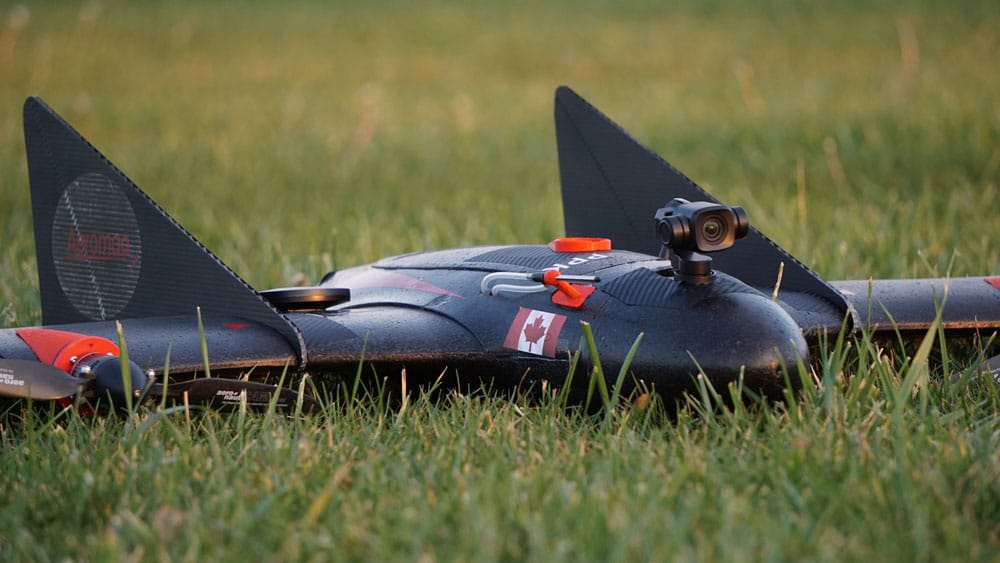Canadian company Aeromao has developed VT Naut VTOSL (Vertical Takeoff and Short Landing), a fixed-wing tail-sitter drone that can land anywhere, even on water, making it ideal for shipboard or coastal operations.
The VT Naut also claimed to be the “world’s first water landing capable – vertical takeoff fixed-wing drone in the market.
The VT Naut is a tail-sitter drone that combines performance and simplicity, ensuring maximum efficiency, unwavering reliability, and cost-effectiveness. The aircraft takes off, pointing straight up, tilts into a horizontal orientation for fast and efficient fixed-wing forward flight, and requires only a short amount of space to perform a horizontal landing. The VT Naut is a lightweight, rugged, easy-to-use system perfect for fieldwork.

With a gross weight of only 3,700 grams and a 2-meter wingspan, it is a compact and uncomplicated drone that can get the job done quickly and effectively. The simplicity of this design is quite impressive, especially when compared to the more complex and expensive VTOL designs that are currently available. Unlike other tilt rotors or multi-motor configurations, this design avoids any unnecessary deadweight throughout its flight stages, making it a cost-effective solution for your needs.
Additionally, the VT Naut boasts Beyond Visual Line of Sight (BVLOS) capabilities, with a data link range of 30km, a flight time of up to 90 minutes, and an indestructible EPP (expanded polypropylene) body design that regains its original shape after impact, preventing any bending or cracking.
All of the drone’s electronics are coated to protect them against humidity and salt water. Additionally, each component sits in its own sealed compartment, and even the onboard compartments for carrying equipment like mapping cameras are waterproofed with gasket seals on their doors.

The belly landing is performed autonomously at a predetermined spot, and the location can even be changed mid-flight. The drone uses a rangefinder to continuously monitor its distance from the water, which helps it tweak its flare for a smooth landing. And if the landing isn’t as smooth as it should be, the drone’s EPP foam body is designed to withstand a fair amount of abuse.
The VT Naut has a cruising speed of 55 km/h (34 mph), with a top speed of 85 km/h (53 mph), and can fly for up to 1.5 hours per charge of its battery. It has a communications range of over 30 km (19 miles) and can carry up to 500 grams of equipment for diverse applications, including high-precision mapping, surveying, inspection, scouting, observation, and agriculture, covering very large areas per flight.
Moreover, the VT Naut can handle windy conditions during takeoff, though it is recommended to restrict flights to wind speeds below 21.7 mph (35 km/h). It can withstand temperatures of -20 to +40 degrees Celsius, can be set up in just 2 minutes, and requires only one operator to control.
The starting price for the VT Naut amphibious UAV is $11,120, while the standard VT Naut drone can be purchased for $8,135.
